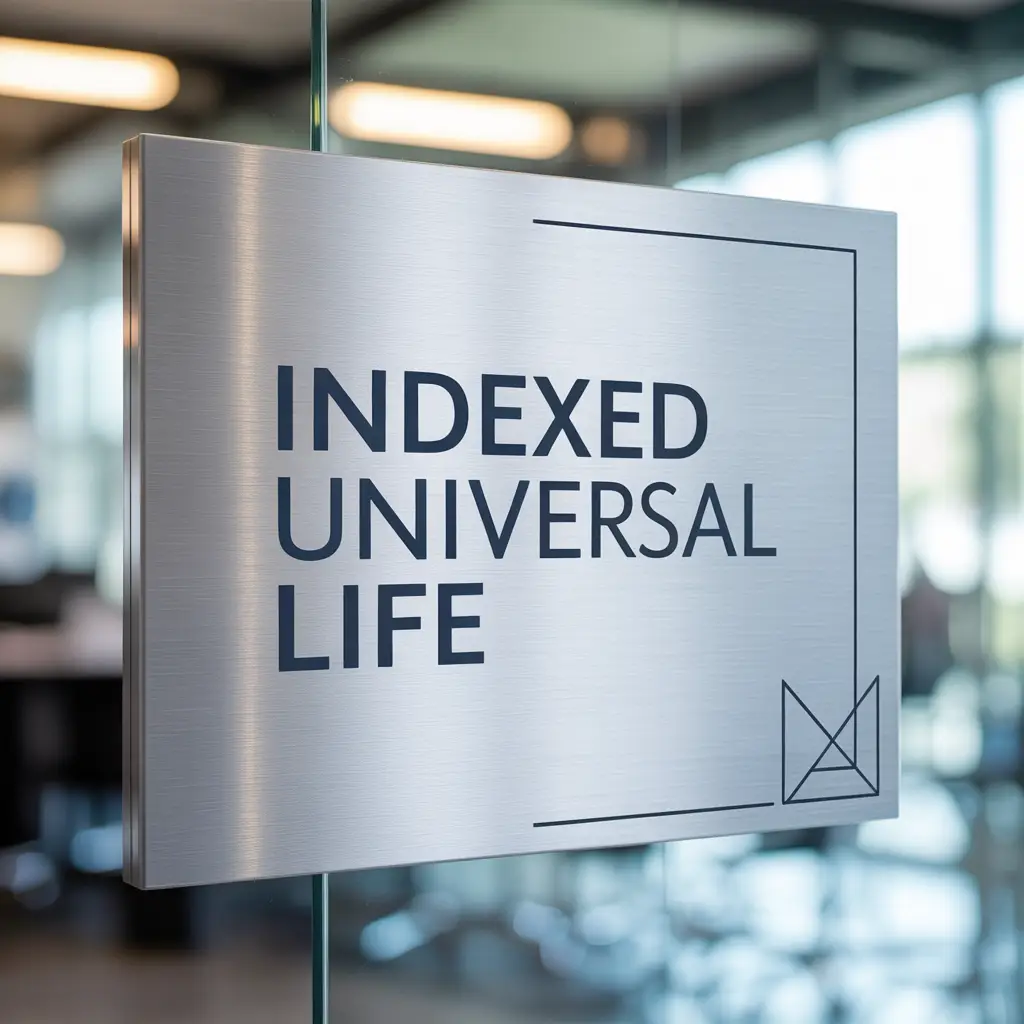Using Indexed Universal Life for Tax-Free Retirement Income. In an era of historically high national debt and uncertain tax future, one question consistently emerges in my client conversations: “How can I create retirement income that’s protected from rising tax rates?” While traditional qualified plans like 401(k)s and IRAs offer valuable tax-deferred growth, they ultimately create tax liabilities during retirement, precisely when many retirees can least afford additional expenses. This growing concern has led to increased interest in tax-diversified retirement strategies, with Indexed Universal Life (IUL) insurance emerging as a powerful but often misunderstood option for tax-free retirement income.
The Tax Challenge in Retirement Planning
Before exploring IUL as a solution, it’s important to understand the specific tax challenges facing today’s retirement savers.
The Tax-Deferred Time Bomb
Traditional retirement accounts grow tax-deferred, but eventually require taxable distributions—either voluntarily when you need income, or mandatorily through Required Minimum Distributions (RMDs) starting at age 73. These distributions are taxed as ordinary income, potentially pushing retirees into higher tax brackets and triggering additional tax consequences:
- Increased taxation of Social Security benefits
- Higher Medicare premiums through IRMAA surcharges
- Loss of valuable deductions and credits
- Exposure to capital gains taxes, when combined with other income sources
The Uncertain Tax Horizon
Current tax rates under the Tax Cuts and Jobs Act are scheduled to sunset after 2025, with rates potentially reverting to previously higher levels. Beyond that immediate horizon, long-term fiscal challenges suggest tax rates may need to rise substantially to address mounting national debt, creating a significant risk for those with large tax-deferred accounts.
The Diversification Imperative
Just as you wouldn’t put all your investment dollars in a single stock, increasingly savvy retirement planners recognize the danger of concentrating all retirement assets in accounts with the same tax treatment. Tax diversification—having accounts with different tax treatments—has become a fundamental planning principle.
Enter Indexed Universal Life Insurance
Indexed Universal Life insurance has gained popularity as a financial strategy that combines death benefit protection with cash value growth potential linked to market indices, all while offering unique tax advantages.
The Core Tax Benefits of IUL
IUL policies provide multiple tax advantages that make them particularly valuable for retirement income planning:
- Tax-deferred growth of cash values during the accumulation phase
- Tax-free access to cash value through policy loans and withdrawals when structured properly
- Income-tax-free death benefit for beneficiaries
- No contribution limits imposed by the IRS (unlike 401(k)s and IRAs)
- No required minimum distributions forcing taxable withdrawals
- No income reporting requirements for policy loans used as retirement income
These tax benefits create a compelling case for including IUL as part of a comprehensive retirement strategy, particularly for those concerned about future tax rates.
How IUL Creates Tax-Free Retirement Income
Understanding how IUL policies can generate tax-free retirement income requires examining both the accumulation phase (building the cash value) and the distribution phase (accessing that value for income).
The Accumulation Phase: Building Your Tax-Free Income Source<
During your working years, premiums paid into an IUL policy (after accounting for insurance costs and fees) contribute to a cash value that grows based on the performance of the selected market index, subject to caps and floors. This growth occurs tax-deferred, allowing for more efficient compounding compared to taxable accounts.
Key factors affecting accumulation include:
- Premium funding level and consistency: Higher and consistent premium payments typically create greater accumulation potential
- Policy design: Minimizing insurance costs relative to premiums can optimize cash value growth
- Indexing strategy selection: Different crediting methods offer various risk-reward profiles
- Time horizon: Longer accumulation periods generally produce more favorable results
The Distribution Phase: Tax-Free Access Strategies
When retirement arrives, IUL policies offer multiple methods to access cash value without triggering income taxes:
Strategy 1: Tax-Free Withdrawals Up to Basis
You can withdraw an amount equal to your total premiums paid (your “basis”) tax-free. This straightforward approach works well as a first-stage income strategy.
Strategy 2: Policy Loans for Ongoing Income
The most powerful tax-free income strategy involves policy loans. When implemented correctly, these provide significant advantages:
- Wash loans (or zero-net-cost loans): Many modern IUL policies offer loan provisions where the interest charged on the loan equals the interest credited to the cash value used as collateral, effectively creating a 0% net cost loan
- Non-recognition tax treatment: The IRS does not consider policy loans as taxable income
- No repayment schedule: Unlike traditional loans, policy loans don’t require regular repayment (though unpaid loans ultimately reduce the death benefit)
- No credit check or qualification: Access is guaranteed regardless of credit score or income
- No impact on Social Security taxation: Unlike some other retirement income, policy loan income doesn’t factor into Social Security benefit taxation calculations
Strategy 3: The Combination Approach
Most sophisticated IUL income plans use a combination of withdrawals up to basis first, followed by policy loans, maximizing tax efficiency while optimizing the policy’s long-term performance.
Real-World Application: The IUL Income Strategy in Action
To illustrate how an IUL strategy might work in practice, let’s consider a hypothetical case study.
Case Study: Building Tax-Free Retirement Income
Michael and Sarah, both age 45, are concerned about future tax rates and want to diversify their retirement income sources. They’re already maximizing their 401(k) contributions but worry about creating too much taxable income in retirement.
They implement an IUL strategy with the following parameters:
- $24,000 annual premium ($2,000 monthly)
- 20-year accumulation period (ages 45-65)
- Targeting $60,000 annual tax-free income for 25 years
Projected Results:
- Total premiums paid: $480,000 over 20 years
- Projected cash value at age 65: $798,000 (assuming moderate indexed crediting)
- Annual tax-free income (ages 65-90): $60,000
- Total retirement income: $1,500,000 over 25 years
- Remaining death benefit: $350,000+ (depending on policy performance)
This approach provides them with significant tax-free income that doesn’t trigger Social Security taxation or Medicare premium increases, while maintaining a meaningful legacy benefit for their children.
Optimization Strategies for Maximum Tax-Free Income
Several strategies can enhance the tax-free income potential of IUL policies:
- Over-funding early: Maximizing early contributions allows for greater compounding
- Minimizing death benefit: Using the lowest death benefit allowed by IRS guidelines reduces insurance costs
- Strategic indexing allocation: Diversifying among available indexing strategies can optimize returns
- Carrier selection: Choosing insurance companies with strong historical performance in maintaining competitive caps and crediting rates
- Loan strategy planning: Carefully designing the sequence and timing of policy loans
Important Considerations and Potential Pitfalls
While IUL policies offer powerful tax advantages for retirement income, they aren’t appropriate for everyone and come with important considerations.
Who Is the IUL Retirement Strategy Right For?
IUL tax-free income strategies tend to work best for individuals who:
- Are in their 30s to 50s: With sufficient time for cash value accumulation
- Have maxed out qualified plans, and are looking for additional tax-advantaged savings
- Are in higher tax brackets, where the tax benefits provide significant value
- Desire flexibility: And want to avoid RMDs and strict withdrawal rules
- Have consistent cash flow: To fund premiums over the long term
- Value legacy planning: And want death benefit protection alongside retirement income
Common Pitfalls to Avoid
Several potential pitfalls can undermine an IUL retirement income strategy:
- Underfunding: Inconsistent or insufficient premium payments can dramatically reduce income potential
- Overpromising: Working with advisors who project unrealistic returns or downplay costs
- Poor policy design: Failing to structure the policy for optimal income generation
- Carrier risk: Selecting insurance companies without strong financial ratings and competitive historical performance
- Tax mismanagement: Improper loan and withdrawal sequencing can create unexpected tax consequences
- Surrender risk: Terminating policies prematurely can trigger tax liabilities on gains
The Modified Endowment Contract (MEC) Consideration
A critical aspect of successful IUL income planning is avoiding Modified Endowment Contract (MEC) status. Policies that exceed certain funding limits relative to the death benefit can be classified as MECs, which dramatically changes their tax treatment:
- Loans and withdrawals from MECs are taxed on a last-in-first-out (LIFO) basis
- A 10% penalty may apply for distributions before age 59½
- The favorable tax treatment that makes IULs attractive for retirement income is largely lost
Proper policy design and ongoing management are essential to prevent MEC classification while maximizing cash value growth.
Integrating IUL Into Your Broader Retirement Strategy
IUL should rarely, if ever, represent your entire retirement strategy. Instead, it functions best as a complementary component within a diversified approach.
The Three-Bucket Approach to Tax Diversification
A balanced retirement strategy often includes three types of accounts with different tax treatments:
- Tax-deferred accounts (Traditional 401(k)s, IRAs): Contributions reduce current taxes, but distributions are fully taxable
- Tax-free accounts (Roth 401(k)s, Roth IRAs, IUL): Funded with after-tax dollars but provide tax-free distributions
- Taxable accounts (Brokerage accounts): No tax advantages for contributions, but qualify for favorable capital gains treatment
This diversification gives you flexibility to manage your tax bracket in retirement by strategically drawing from different buckets based on your tax situation each year.
Strategic Withdrawal Sequencing
Having an IUL policy as part of your retirement strategy provides valuable options for withdrawal sequencing. Many financial planners recommend a specific order of withdrawals to minimize lifetime tax burden:
- Required Minimum Distributions (RMDs) from qualified accounts (when required)
- Taxable account withdrawals (utilizing lower capital gains rates)
- Tax-free withdrawals from Roth accounts and IUL policies (saved for later years when tax rates may be higher)
With properly structured IUL policies, you gain additional flexibility in this sequencing, potentially allowing you to delay Social Security benefits or manage bracket positioning for other withdrawals.
Conclusion: The Role of IUL in Modern Retirement Planning
In an environment of tax uncertainty and increasing longevity risk, Indexed Universal Life insurance offers a compelling option for creating tax-free retirement income. While not appropriate for everyone, IUL’s unique combination of tax advantages, flexibility, and legacy benefits makes it worth considering as part of a comprehensive retirement strategy.
The key to success with IUL retirement income planning lies in proper design, realistic expectations, consistent funding, and integration with your broader financial plan. Working with a financial advisor who specializes in IUL strategies can help you determine whether this approach aligns with your specific retirement objectives and constraints.
For those concerned about future tax rates and seeking to diversify their retirement income sources, IUL represents one of the few remaining strategies for creating substantial tax-free retirement income without the contribution limits and restrictions of qualified plans.
Next Steps
Using Indexed Universal Life for Tax-Free Retirement Income. If you’re interested in exploring whether an IUL tax-free income strategy might be appropriate for your situation, I recommend:
- Assessing your current tax diversification: Review your existing retirement accounts and their tax treatment
- Evaluating your retirement income needs: Calculate your projected expenses and income sources
- Considering your tax outlook: Evaluate how your tax situation might evolve in retirement
- Consulting with a specialist: Work with an advisor experienced in IUL retirement income strategies to develop a personalized analysis
Remember that the most effective retirement strategies are comprehensive, addressing not just tax efficiency but also investment risk, longevity protection, healthcare expenses, and legacy goals. IUL can be a valuable tool in this broader context when used appropriately.
This blog post is for educational purposes only and should not be considered financial advice. Please consult with a qualified financial professional before making any investment decisions.









